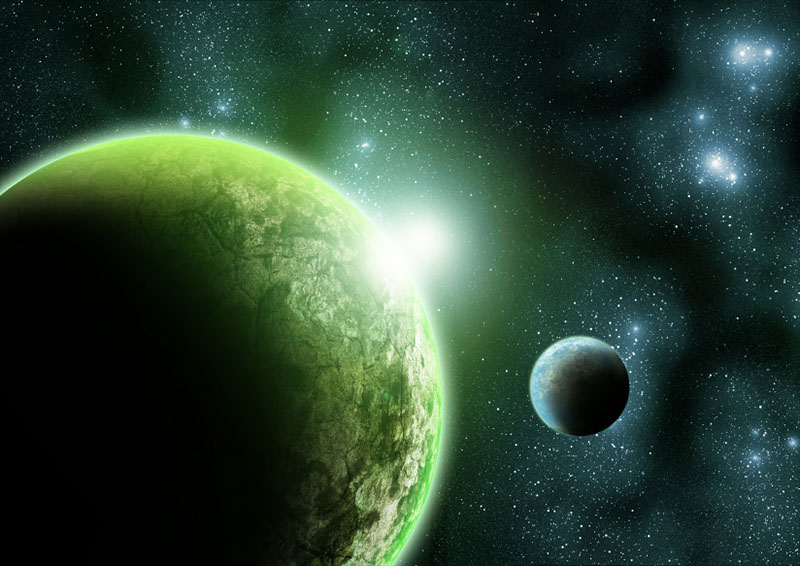why aliens might not need a stabilizing moon

Quite a bit of scientific literature on astrobiology is filled with references to very exacting criteria for exoplanets capable of sustaining alien ecosystems. They have to be just the right distance from their suns, have the right kind of atmosphere, fall in the right temperature range, and hopefully, have a large stabilizing moon to counter their constant orbital wobbles from creating ice ages and migrating ice caps around the poles. But as we see more exoplanets out in the wild and do more accurate simulations, we’re finding that a lot of these constraints are starting to fall away. It seems that life could have a chemical basis in a liquid ethane lake, and might not even need a star to host a habitable ocean. And now, it looks like it might not even need a big moon to keep its axis more or less steady over the eons, allowing complex life to evolve without swift climate changes. It’s a nice to have for a flourishing ecosystem, certainly, kind of like having traction control in your car is a really nice and helpful feature, especially on ice and wet roads. But you can certainly get by without it if you had to, just as potential alien life on exoplanets without a big moon like ours could cope with an occasional climate shift.
It all started with a simulation in 1993 which showed that without the Moon, our planet could wobble as much as 85° on its axis which means that long term climate patterns humans enjoyed for many thousands of years just wouldn’t be possible. On geologic timescales, we’d be looking at mass extinctions on a far more frequent basis than we see in the fossil record as life would struggle to adapt. Planets are not exactly dainty things and all this would happen over tens of millions of years, but if we consider that Earth was home to living things for roughtly 3.5 billion years or so, these are fairly rapid and extreme changes which would test evolution’s ability to produce complex multicellular organisms when the selective pressure is to stay small and very efficient. So if an alien planet wants to be home to a massive, complex, and diverse ecosystem, it better be just as stable as we are, wobbling only by 2.6° at most thanks to our massive Moon, right? Turns out that that’s not the case at all because the range found in the original study is actually exaggerated by more than a factor of two. In fact, if the Moon was never formed, we would’ve wobbled between an axis of 10° and 50° over 4 billion years. Not a bad improvement on the originally predicted arc that could turn our planet sideways, then upright again.
And there’s another surprise. Within those 4 billion years without the Moon’s influence, there are stable cycles lasting for 500 million years. While the planet’s orbital wobble would be far more extreme than we have now, it wouldn’t be anywhere near 85° off axis. A more accurate figure seems to be 15° or so, which would entail the occasional massive ice age followed by rapid warming periods, but on timescales that would span almost all the evolutionary changes that lead from giant sea scorpions, to dinosaurs, to us. How can this kind of stability be possible if we didn’t have a lunar rudder? Well, generally a planet wobbles due to the very slight tugs from other objects in the solar system accumulating over millions and millions of years. But the same tugs that will send a planet wobbling could also be corrective and the occasional comet or asteroid impact could nudge the planet in another direction by countering a tug from a distant world or a passing comet. It all ads up to a slow, almost reluctant wobble rather than uncontrolled tumbling through space. And if the planet happens to be in a retrograde orbit (orbiting in the opposite direction of its siblings), their wobbles are in the same range as our current axial oscillations. That means we can bravely widen our search to include rocky worlds without large, stabilizing moons as a potential home for macroscopic aliens, if not other intelligent life.
See: Lissauer, J., Barnes, J., Chambers, J. (2012) Obliquity variations of a moonless Earth Icarus, 217 (1), 77- 87 DOI: 10.1016/j.icarus.2011.10.013





